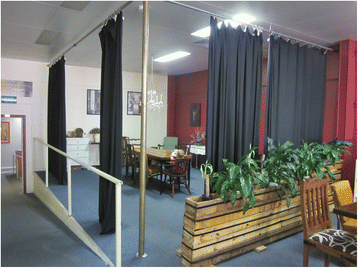Implementation and evaluation of community-based drop-in centres for breastfeeding support in Victoria, Australia
- PMID: 29158771
- PMCID: PMC5683552
- DOI: 10.1186/s13006-017-0136-7
Implementation and evaluation of community-based drop-in centres for breastfeeding support in Victoria, Australia
Abstract
Background: While Australia has high breastfeeding initiation, there is a sharp decline in the first weeks postpartum and this continues throughout the first year. Supporting breastfeeding In Local Communities (SILC) was a three-arm cluster randomised controlled trial to determine whether early home-based breastfeeding support by a maternal and child health nurse (SILC-MCHN), with or without access to a community-based breastfeeding drop-in centre, increased the proportion of infants receiving any breast milk at three, four and six months. The trial was conducted in ten Local Government Areas (LGAs) in Victoria, Australia.The primary aim of this paper is to describe the three drop-in centres established during the trial; and the profile of women who accessed them. The secondary aim is to explore the views and experiences of the drop-in centre staff, and the challenges faced in establishing and maintaining a breastfeeding drop-in centre in the community.
Methods: Evaluation of the three LGAs with drop-in centres was multifaceted and included observational visits and field notes; data collected from attendance log books from each drop-in centre; a written survey and focus groups with maternal and child health (MCH) nurses who ran the drop-in centres; and semi-structured interviews with MCH coordinators of the participating LGAs.
Results: The three LGAs developed and ran different models of breastfeeding drop-in centres. They reported challenges in finding convenient, accessible locations. Overall, attendance was lower than expected, with an average of only one attendee per session. Two global themes were identified regarding staff views: implementation challenges, encompassing finding accessible, available space, recruiting volunteers to provide peer support, and frustration when women did not attend; and the work of SILC-MCHNs, including themes of satisfying and rewarding work, juggling roles, and benefits to women, babies and the community.
Conclusion: Providing community-based breastfeeding support was satisfying for the drop-in centre staff but proved difficult to implement, reflected by the lower than anticipated attendances at all of the drop-in centres. Interventions to increase breastfeeding in complex community settings require sufficient time to build partnerships with the existing services and the target population; to understand when and how to offer interventions for optimum benefit.
Trial registration: Australian New Zealand Clinical Trials Registry ACTRN12611000898954.
Keywords: Breastfeeding; Breastfeeding promotion; Breastfeeding support; Community health services, primary health care, preventative health care; Drop-in centre; Outpatient service.
Conflict of interest statement
Ethics approval and consent to participate
The SILC trial received ethics approval from the Department of Education and Early Childhood Development (DEECD) (project number 2011_001305) and La Trobe University Human Ethics (project number 11–068) Committees.
Consent for publication
Written consent was obtained from all participants in this study, including explicit consent for publication of images included in this manuscript.
Competing interests
The authors declare they have no competing interests.
Publisher’s Note
Springer Nature remains neutral with regard to jurisdictional claims in published maps and institutional affiliations.
Figures
References
-
- Australian Institute of Health and Welfare (AIHW). 2011. 2010 Australian National Infant Feeding Survey: Indicator Results. Cat. no. PHE 156. Canberra: AIHW. http://www.aihw.gov.au/publication-detail/?id=10737420927. Accessed 1 Feb 2017.
-
- Amir LH, Donath SM. Socioeconomic status and rates of breastfeeding in Australia: evidence from three recent national health surveys. Medical Journal of Australia. 2008;189(5):254–256. - PubMed
-
- Victorian Government Department of Education and Training (DET). 2015. Maternal and Child Health Services Annual Report (North-Western Victoria Region) 2014–2015, DET. http://www.education.vic.gov.au/Documents/childhood/providers/support/20.... Accessed 1 Feb 2017.
-
- Victorian Government Department of Education and Training (DET). 2015. Maternal and Child Health Services Annual Report (South-Eastern Victoria Region) 2014–2015, DET. http://www.education.vic.gov.au/Documents/childhood/providers/support/20.... Accessed 1 Feb 2017.
LinkOut - more resources
Full Text Sources
Other Literature Sources
Miscellaneous





